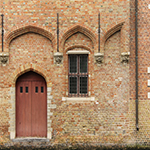Euroacademia Conferences
 Europe Inside-Out: Europe and Europeanness Exposed to Plural Observers (9th Edition) April 24 - 25, 2020
Europe Inside-Out: Europe and Europeanness Exposed to Plural Observers (9th Edition) April 24 - 25, 2020 Identities and Identifications: Politicized Uses of Collective Identities (9th Edition) June 12 - 13, 2020
Identities and Identifications: Politicized Uses of Collective Identities (9th Edition) June 12 - 13, 2020 8th Forum of Critical Studies: Asking Big Questions Again January 24 - 25, 2020
8th Forum of Critical Studies: Asking Big Questions Again January 24 - 25, 2020 Re-Inventing Eastern Europe (7th Edition) December 13 - 14, 2019
Re-Inventing Eastern Europe (7th Edition) December 13 - 14, 2019 The European Union and the Politicization of Europe (8th Edition) October 25 - 26, 2019
The European Union and the Politicization of Europe (8th Edition) October 25 - 26, 2019 Identities and Identifications: Politicized Uses of Collective Identities (8th Edition) June 28 - 29, 2019
Identities and Identifications: Politicized Uses of Collective Identities (8th Edition) June 28 - 29, 2019 The European Union and the Politicization of Europe (7th Edition) January 25 - 26, 2019
The European Union and the Politicization of Europe (7th Edition) January 25 - 26, 2019 7th Forum of Critical Studies: Asking Big Questions Again November 23 - 24, 2018
7th Forum of Critical Studies: Asking Big Questions Again November 23 - 24, 2018 Europe Inside-Out: Europe and Europeanness Exposed to Plural Observers (8th Edition) September 28 - 30, 2018
Europe Inside-Out: Europe and Europeanness Exposed to Plural Observers (8th Edition) September 28 - 30, 2018 Identities and Identifications: Politicized Uses of Collective Identities (7th Edition) June 14 - 15, 2018
Identities and Identifications: Politicized Uses of Collective Identities (7th Edition) June 14 - 15, 2018
Identity and Self-Fashioning of an Ottoman Ruler as Shown in Gentile Bellini’s Portrait of Sultan Mehmed II (1480)
-
-

-
Presentation speakers
- Talitha M. G. Schepers, Christ’s College, University of Cambridge, UK
- Download presentation
Abstract:
On 1 August 1479 the Venetian Senate received a request from Sultan Mehmed II (r. 1444-46/r.1451-1481) for a painter. The Venetian Senate decided to send its most prominent painter, Gentile Bellini (fl. 1460-1507). Because of the diplomatic importance of this assignment, it can be understood that Bellini was not only sent to Constantinople for his artistic qualities, but also as a cultural ambassador for Venice. Unfortunately, only few works from Bellini’s stay at the Ottoman court (1479-1481) have survived, including some drawings, a medal of Mehmed II and the painting Portrait of Sultan Mehmed II (1480). This paper seeks to address the concepts of identity and self-fashioning in Bellini’s Portrait of Sultan Mehmed II, by examining its attribution, provenance and iconography. Moreover, a comparison between this painting and the surviving medals of Mehmed II will allow for a detailed study of the iconographical devices of power used within the portrait. Although accepting Portrait of Sultan Mehmed II as an important cross-cultural artistic testimony, due to the complexity of the painting’s condition and conservation history, few scholars have further explored its significance as a political and cultural expression of self-representation by an Ottoman ruler. Therefore, this paper aims to examine the intercultural dialogue between the identities of the painter and the sitter. In addition, I will discuss not only how portraiture is used to create a cross-cultural identity, but also how courtly culture and the Renaissance itself had an impact on the staging of this multi-layered identity.
-
Related Presentations

A Document of No Good: The Modern Passport System and the Administration of the Undesired in Europe between the World Wars
- Yaron Jean

















